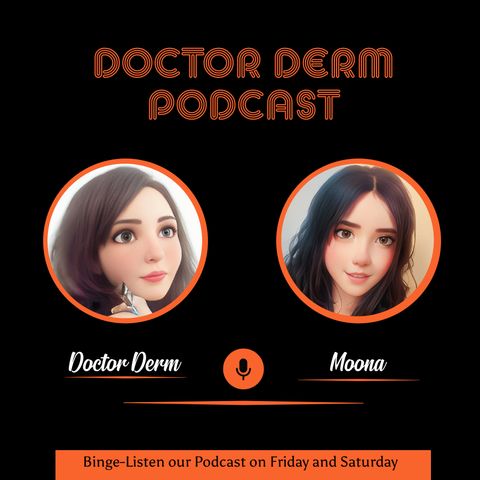Exosomes: How are they changing the Aesthetic World

Download and listen anywhere
Download your favorite episodes and enjoy them, wherever you are! Sign up or log in now to access offline listening.
Exosomes: How are they changing the Aesthetic World
This is an automatically generated transcript. Please note that complete accuracy is not guaranteed.
Description
Listen the use, affects, benefits, disadvantages of Exosomes with Moona and Doctor Derm! Exosomes are nanosized particles that are secreted by cells. They are a type of extracellular vesicle that...
show moreExosomes are nanosized particles that are secreted by cells. They are a type of extracellular vesicle that are produced in the endosomal compartment of most eukaryotic cells. Exosomes are found in biological fluids like blood, urine, saliva, and cerebrospinal fluid.
Exosomes are rich in proteins, nucleic acids, and other bioactive molecules. They contain a complex cargo of contents derived from the original cell, including proteins, lipids, mRNA, miRNA, and DNA.
Exosomes play a significant role in almost every physiological process in the human body. They are mediators of near and long-distance intercellular communication in health and disease.
Exosomes have the characteristics of low immunogenicity and strong tissue penetration, making them ideal for applications in medical aesthetics.
Exosomes are of general interest for their role in cell biology, and for their potential therapeutic and diagnostic applications. It was originally thought that exosomes were simply cellular waste products, however their function is now known to extend beyond waste removal. Exosomes represent a novel mode of cell communication and contribute to a spectrum of biological processes in health and disease.
One of the main mechanisms by which exosomes are thought to exert their effects is via the transfer of exosome-associated RNA to recipient cells, where they influence protein machinery. There is growing evidence to support this, such as the identification of intact and functional exosomal RNA in recipient cells and certain RNA-binding proteins have been identified as likely players in the transfer of RNA to target cells.5,6 MicroRNAs and long noncoding RNAs are shuttled by exosomes and alter gene expression while proteins (e.g. heat shock proteins, cytoskeletal proteins, adhesion molecules, membrane transporter and fusion proteins) can directly affect target cell
Exosomes have been described as messengers of both health and disease. While they are essential for normal physiological conditions, they also act to potentiate cellular stress and damage under disease states.
How are they generated?
Multivesicular bodies are a specialized subset of endosomes that contain membrane-bound intraluminal vesicles. Intraluminal vesicles are essentially the precursors of exosomes, and form by budding into the lumen of the multivesicular body. Most intraluminal vesicles fuse with lysosomes for subsequent degradation, while others are released into the extracellular space.9,10 The intraluminal vesicles that are secreted into the extracellular space become exosomes. This release occurs when the multivesicular body fuses with the plasma membrane.
Information
| Author | Motivation Koo |
| Organization | Motivation Koo |
| Website | - |
| Tags |
Copyright 2024 - Spreaker Inc. an iHeartMedia Company

Comments